The Influence of Climatic Conditions and Agronomic Practices on Greenhouse Gas Emissions in a Conventional Vineyard (DOCa. Rioja, Spain)
Abstract
:1. Introduction
2. Materials and Methods
2.1. Plot Description and Experimental Design
2.2. Climatic Characteristics
2.3. Soil Characterization
- Particle size analysis: Laser diffraction with a particle size analyzer LS 13320 (Beckman Coulter, Indianapolis, IN, United States), equipped with a universal liquid analysis module and autosampler;
- Oxidizable organic matter: the Walkley–Black method (MAPA, 1994);
- Total nitrogen: the Dumas method;
- Total carbonates: EN 15936:2012 method, with an inorganic carbon analyzer CO-202 (Equilab, Madrid (Spain));
- Active limestone: Nijelshon method (MAPA, 1994);
- Electrical conductivity (preliminary salinity test) and pH in soil suspension: water (1:5). pH was determined using the EN 15933:2012 method, and electrical conductivity was determined using the EN 13038:2011 method, with a Metrohm auto-titrator equipped with a pH meter and conductivity meter.
2.4. Determination of GHG
2.5. Statistical Analysis
3. Results and Discussion
3.1. Characteristics of the Plot
3.2. Carbon Dioxide (CO2)
3.3. Nitrous Oxide (N2O)
3.4. Methane (CH4)
4. Conclusions
Supplementary Materials
Author Contributions
Funding
Data Availability Statement
Acknowledgments
Conflicts of Interest
References
- Ahmed, M. Introduction to Modern Climate Change. Andrew E. Dessler: Cambridge University Press, 2011, 252 pp, ISBN-10: 0521173159. Sci. Total Environ. 2020, 734, 139397. [Google Scholar] [CrossRef]
- Intergovernmental Panel on Climate Change. In Global Warming of 1.5 °C; Cambridge University Press: Cambridge, UK, 2019; ISBN 9781009157940. Available online: https://www.ipcc.ch/site/assets/uploads/sites/2/2022/06/SR15_Full_Report_HR.pdf (accessed on 20 August 2023).
- FAO-IPCC. Estimación de Emisiones de Gases de Efecto Invernadero En La Agricultura Un Manual Para Abordar Los Requisitos; FAO-IPCC: Rome, Italy, 2015; ISBN 9789253086740. [Google Scholar]
- Horel, Á.; Tóth, E.; Gelybó, G.; Dencso, M.; Potyó, I. Soil CO2 and N2O Emission Drivers in a Vineyard (Vitis Vinifera) under Different Soil Management Systems and Amendments. Sustainability 2018, 10, 1811. [Google Scholar] [CrossRef]
- Davidson, E.A.; Janssens, I.A. Temperature Sensitivity of Soil Carbon Decomposition and Feedbacks to Climate Change. Nature 2006, 440, 165–173. [Google Scholar] [CrossRef]
- Rey, A.; Pegoraro, E.; Tedeschi, V.; De Parri, I.; Jarvis, P.G.; Valentini, R. Annual Variation in Soil Respiration and Its Components in a Coppice Oak Forest in Central Italy. Glob. Chang. Biol. 2002, 8, 851–866. [Google Scholar] [CrossRef]
- Yu, O.T.; Greenhut, R.F.; O’Geen, A.T.; Mackey, B.; Horwath, W.R.; Steenwerth, K.L. Precipitation Events, Soil Type, and Vineyard Management Practices Influence Soil Carbon Dynamics in a Mediterranean Climate (Lodi, California). Soil Sci. Soc. Am. J. 2019, 83, 772–779. [Google Scholar] [CrossRef]
- Zamora-Morales, B.P.; Mendoza-Cariño, M.; Sangerman-Jarquín, D.M.; Quevedo Nolasco, A.; Navarro Bravo, A. El Manejo Del Suelo En La Conservación de Carbono Orgánico. Rev. Mex. Cienc. Agrícolas 2018, 9, 1787–1799. [Google Scholar] [CrossRef]
- Kessavalou, A.; Mosier, A.R.; Doran, J.W.; Drijber, R.A.; Lyon, D.J.; Heinemeyer, O. Fluxes of Carbon Dioxide, Nitrous Oxide, and Methane in Grass Sod and Winter Wheat-Fallow Tillage Management. J. Environ. Qual. 1998, 27, 1094–1104. [Google Scholar] [CrossRef]
- Franco-Luesma, S.; Cavero, J.; Plaza-Bonilla, D.; Cantero-Martínez, C.; Arrúe, J.L.; Álvaro-Fuentes, J. Tillage and Irrigation System Effects on Soil Carbon Dioxide (CO2) and Methane (CH4) Emissions in a Maize Monoculture under Mediterranean Conditions. Soil Tillage Res. 2020, 196, 104488. [Google Scholar] [CrossRef]
- Calleja-Cervantes, M.E.; Fernández-González, A.J.; Irigoyen, I.; Fernández-López, M.; Aparicio-Tejo, P.M.; Menéndez, S. Thirteen Years of Continued Application of Composted Organic Wastes in a Vineyard Modify Soil Quality Characteristics. Soil Biol. Biochem. 2015, 90, 241–254. [Google Scholar] [CrossRef]
- Sa, E.; Ferreira, J.; Carvalho, A.; Borrego, C. Development of Current and Future Pollutant Emissions for Portugal. Atmos. Pollut. Res. 2015, 6, 849–857. [Google Scholar] [CrossRef]
- García Sepúlveda, J.L.; Cueto Wong, J.A.; Báez Pérez, A.; Saynes Santillán, V. Fertilización Nitrogenada y Emisión de N2O En La Producción de Maíz En La Comarca Lagunera. Rev. Mex. Cienc. Agrícolas 2021, 12, 991–1003. [Google Scholar] [CrossRef]
- Lu, Y.; Huang, Y.; Zou, J.; Zheng, X. An Inventory of N2O Emissions from Agriculture in China Using Precipitation-Rectified Emission Factor and Background Emission. Chemosphere 2006, 65, 1915–1924. [Google Scholar] [CrossRef] [PubMed]
- Aguilera, E.; Lassaletta, L.; Sanz-Cobena, A.; Garnier, J.; Vallejo, A. The Potential of Organic Fertilizers and Water Management to Reduce N2O Emissions in Mediterranean Climate Cropping Systems. A Review. Agric. Ecosyst. Environ. 2013, 164, 32–52. [Google Scholar] [CrossRef]
- Meijide, A.; Díez, J.A.; Sánchez-Martín, L.; López-Fernández, S.; Vallejo, A. Nitrogen Oxide Emissions from an Irrigated Maize Crop Amended with Treated Pig Slurries and Composts in a Mediterranean Climate. Agric. Ecosyst. Environ. 2007, 121, 383–394. [Google Scholar] [CrossRef]
- Dutaur, L.; Verchot, L.V. A Global Inventory of the Soil CH4 Sink. Global. Biogeochem. Cycles 2007, 21, 1–9. [Google Scholar] [CrossRef]
- Livesley, S.J.; Idczak, D.; Fest, B.J. Differences in Carbon Density and Soil CH4/N2O Flux among Remnant and Agro-Ecosystems Established since European Settlement in the Mornington Peninsula, Australia. Sci. Total Environ. 2013, 465, 17–25. [Google Scholar] [CrossRef] [PubMed]
- Garland, G.M.; Suddick, E.; Burger, M.; Horwath, W.R.; Six, J. Corrigendum to “Direct N2O Emissions Following Transition from Conventional till to No-till in a Cover Cropped Mediterranean Vineyard (Vitis Vinifera)” [Agric. Ecosyst. Environ. 141 (2011) 234–239]. Agric. Ecosyst. Environ. 2011, 144, 422. [Google Scholar] [CrossRef]
- Service-USDA. U.S.D. of A.N.R.C. Claves Para La Taxonomía de Suelos. Mdp. Edu. Ar. 2014, 339. Available online: https://www.nrcs.usda.gov/sites/default/files/2022-10/Spanish-Keys-to-Soil-Taxonomy.pdf (accessed on 20 August 2023).
- Timothy, B.P.; Rodney, T. Venterea USDA-ARS GRACEnet Project Protocols Chapter 3. Chamber-Based Trace Gas Flux Measurements. Flux 2010, 2010, 1–39. [Google Scholar]
- Garland, G.M.; Suddick, E.; Burger, M.; Horwath, W.R.; Six, J. Direct N2O Emissions from a Mediterranean Vineyard: Event-Related Baseline Measurements. Agric. Ecosyst. Environ. 2014, 195, 44–52. [Google Scholar] [CrossRef]
- Recio, J.; Vallejo, A.; Le-Noë, J.; Garnier, J.; García-Marco, S.; Álvarez, J.M.; Sanz-Cobena, A. The Effect of Nitrification Inhibitors on NH3 and N2O Emissions in Highly N Fertilized Irrigated Mediterranean Cropping Systems. Sci. Total Environ. 2018, 636, 427–436. [Google Scholar] [CrossRef] [PubMed]
- Marín-Martínez, A.; Sanz-Cobeña, A.; Bustamante, M.A.; Agulló, E.; Paredes, C. Effect of Organic Amendment Addition on Soil Properties, Greenhouse Gas Emissions and Grape Yield in Semi-Arid Vineyard Agroecosystems. Agronomy 2021, 11, 1477. [Google Scholar] [CrossRef]
- Pereira, J.; Figueiredo, N.; Goufo, P.; Carneiro, J.; Morais, R.; Carranca, C.; Coutinho, J.; Trindade, H. Effects of Elevated Temperature and Atmospheric Carbon Dioxide Concentration on the Emissions of Methane and Nitrous Oxide from Portuguese Flooded Rice Fields. Atmos. Environ. 2013, 80, 464–471. [Google Scholar] [CrossRef]
- Fangueiro, D.; Becerra, D.; Albarrán, Á.; Peña, D.; Sanchez-Llerena, J.; Rato-Nunes, J.M.; López-Piñeiro, A. Effect of Tillage and Water Management on GHG Emissions from Mediterranean Rice Growing Ecosystems. Atmos. Environ. 2017, 150, 303–312. [Google Scholar] [CrossRef]
- Raich, J.W.; Schlesinger, W.H. The Global Carbon Dioxide Flux in Soil Respiration and Its Relationship to Vegetation and Climate. Tellus. Ser. B 1992, 44, 81–99. [Google Scholar] [CrossRef]
- Sánchez-Navarro, V.; Shahrokh, V.; Martínez-Martínez, S.; Acosta, J.A.; Almagro, M.; Martínez-Mena, M.; Boix-Fayos, C.; Díaz-Pereira, E.; Zornoza, R. Perennial Alley Cropping Contributes to Decrease Soil CO2 and N2O Emissions and Increase Soil Carbon Sequestration in a Mediterranean Almond Orchard. Sci. Total Environ. 2022, 845, 157225. [Google Scholar] [CrossRef]
- Reicosky, D.C.; Dugas, W.A.; Torbert, H.A. Tillage-Induced Soil Carbon Dioxide Loss from Different Cropping Systems. Soil Tillage Res. 1997, 41, 105–118. [Google Scholar] [CrossRef]
- Six, J.; Elliott, E.T.; Paustian, K. Aggregate and Soil Organic Matter Dynamics under Conventional and No-Tillage Systems. Soil Sci. Soc. Am. J. 1999, 63, 1350–1358. [Google Scholar] [CrossRef]
- Calderón, F.J.; Jackson, L.E.; Scow, K.M.; Rolston, D.E. Short-Term Dynamics of Nitrogen, Microbial Activity, and Phospholipid Fatty Acids after Tillage. Soil Sci. Soc. Am. J. 2001, 65, 118–126. [Google Scholar] [CrossRef]
- Steenwerth, K.L.; Pierce, D.L.; Carlisle, E.A.; Spencer, R.G.M.; Smart, D.R. A Vineyard Agroecosystem: Disturbance and Precipitation Affect Soil Respiration under Mediterranean Conditions. Soil Sci. Soc. Am. J. 2010, 74, 231–239. [Google Scholar] [CrossRef]
- Marques, F.J.M.; Pedroso, V.; Trindade, H.; Pereira, J.L.S. Impact of Vineyard Cover Cropping on Carbon Dioxide and Nitrous Oxide Emissions in Portugal. Atmos. Pollut. Res. 2018, 9, 105–111. [Google Scholar] [CrossRef]
- Rey, A.; Petsikos, C.; Jarvis, P.G.; Grace, J. Effect of Temperature and Moisture on Rates of Carbon Mineralization in a Mediterranean Oak Forest Soil under Controlled and Field Conditions. Eur. J. Soil Sci. 2005, 56, 589–599. [Google Scholar] [CrossRef]
- Lampurlanés, J.; Plaza-Bonilla, D.; Álvaro-Fuentes, J.; Cantero-Martínez, C. Long-Term Analysis of Soil Water Conservation and Crop Yield under Different Tillage Systems in Mediterranean Rainfed Conditions. F Crop. Res. 2016, 189, 59–67. [Google Scholar] [CrossRef]
- López-Urrea, R.; Sánchez, J.M.; Montoro, A.; Mañas, F.; Intrigliolo, D.S. Effect of Using Pruning Waste as an Organic Mulching on a Drip-Irrigated Vineyard Evapotranspiration under a Semi-Arid Climate. Agric. For. Meteorol. 2020, 291, 108064. [Google Scholar] [CrossRef]
- Morell, F.J.; Álvaro-Fuentes, J.; Lampurlanés, J.; Cantero-Martínez, C. Soil CO2 Fluxes Following Tillage and Rainfall Events in a Semiarid Mediterranean Agroecosystem: Effects of Tillage Systems and Nitrogen Fertilization. Agric. Ecosyst. Environ. 2010, 139, 167–173. [Google Scholar] [CrossRef]
- Yu, O.T.; Greenhut, R.F.; O’Geen, A.T.; Mackey, B.; Horwath, W.R.; Steenwerth, K.L. Precipitation Events and Management Practices Affect Greenhouse Gas Emissions from Vineyards in a Mediterranean Climate. Soil Sci. Soc. Am. J. 2017, 81, 138–152. [Google Scholar] [CrossRef]
- Fernández-Rodríguez, D.; Fangueiro, D.P.; Abades, D.P.; Albarrán, Á.; Rato-Nunes, J.M.; López-Piñeiro, A. Direct and Residual Impacts of Olive-Mill Waste Application to Rice Soil on Greenhouse Gas Emission and Global Warming Potential under Mediterranean Conditions. Agronomy 2022, 12, 1344. [Google Scholar] [CrossRef]
- McKenney, D.J.; Wang, S.W.; Drury, C.F.; Findlay, W.I. Dentrification and Mineralization in Soil Amended with Legume, Grass, and Corn Residues. Soil Sci. Soc. Am. J. 1993, 57, 1013–1020. [Google Scholar] [CrossRef]
- Zhu, X.; Burger, M.; Doane, T.A.; Horwath, W.R. Ammonia Oxidation Pathways and Nitrifier Denitrification Are Significant Sources of N2O and NO under Low Oxygen Availability. Proc. Natl. Acad. Sci. USA 2013, 110, 6328–6333. [Google Scholar] [CrossRef]
- Galbally, I.E.; Kirstine, W.V.; Meyer, C.P.M.; Wang, Y.P. Soil-Atmosphere Trace Gas Exchange in Semiarid and Arid Zones. J. Environ. Qual. 2008, 37, 599–607. [Google Scholar] [CrossRef]
- Cowan, N.; Levy, P.; Maire, J.; Coyle, M.; Leeson, S.R.; Famulari, D.; Carozzi, M.; Nemitz, E.; Skiba, U. An Evaluation of Four Years of Nitrous Oxide Fluxes after Application of Ammonium Nitrate and Urea Fertilisers Measured Using the Eddy Covariance Method. Agric. For. Meteorol. 2020, 280, 107812. [Google Scholar] [CrossRef]
- Sander, B.O.; Samson, M.; Buresh, R.J. Methane and Nitrous Oxide Emissions from Flooded Rice Fields as Affected by Water and Straw Management between Rice Crops. Geoderma 2014, 235–236, 355–362. [Google Scholar] [CrossRef]
- Lazcano, C.; Gonzalez-Maldonado, N.; Yao, E.H.; Wong, C.T.F.; Merrilees, J.J.; Falcone, M.; Peterson, J.D.; Casassa, L.F.; Decock, C. Sheep Grazing as a Strategy to Manage Cover Crops in Mediterranean Vineyards: Short-Term Effects on Soil C, N and Greenhouse Gas (N2O, CH4, CO2) Emissions. Agric. Ecosyst. Environ. 2022, 327, 107825. [Google Scholar] [CrossRef]
- Heller, H.; Bar-Tal, A.; Tamir, G.; Bloom, P.; Venterea, R.T.; Chen, D.; Zhang, Y.; Clapp, C.E.; Fine, P. Effects of Manure and Cultivation on Carbon Dioxide and Nitrous Oxide Emissions from a Corn Field under Mediterranean Conditions. J. Environ. Qual. 2010, 39, 437–448. [Google Scholar] [CrossRef] [PubMed]
- Goldberg, S.D.; Gebauer, G. N2O and NO Fluxes between a Norway Spruce Forest Soil and Atmosphere as Affected by Prolonged Summer Drought. Soil Biol. Biochem. 2009, 41, 1986–1995. [Google Scholar] [CrossRef]
- Wolff, M.W.; Alsina, M.M.; Stockert, C.M.; Khalsa, S.D.S.; Smart, D.R. Minimum Tillage of a Cover Crop Lowers Net GWP and Sequesters Soil Carbon in a California Vineyard. Soil Tillage Res. 2018, 175, 244–254. [Google Scholar] [CrossRef]
- Ball, B.C.; Dobbie, K.E.; Parker, J.P.; Smith, K.A. The Influence of Gas Transport and Porosity on Methane Oxidation in Soils. J. Geophys. Res. Atmos. 1997, 102, 23301–23308. [Google Scholar] [CrossRef]
- Shvaleva, A.; Cruz, C.; Castaldi, S.; Rosa, A.P.; Chaves, M.M.; Pereira, J.S. Shvaleva Corrected Final Version 2E. Plant Soil Environ. 2011, 2011, 471–477. [Google Scholar]
- Cai, Y.; Chang, S.X.; Cheng, Y. Greenhouse Gas Emissions from Excreta Patches of Grazing Animals and Their Mitigation Strategies. Earth Sci. Rev. 2017, 171, 44–57. [Google Scholar] [CrossRef]
- Gao, B.; Ju, X.; Su, F.; Meng, Q.; Oenema, O.; Christie, P.; Chen, X.; Zhang, F. Nitrous Oxide and Methane Emissions from Optimized and Alternative Cereal Cropping Systems on the North China Plain: A Two-Year Field Study. Sci. Total Environ. 2014, 472, 112–124. [Google Scholar] [CrossRef]
- Smith, P.; Soussana, J.F.; Angers, D.; Schipper, L.; Chenu, C.; Rasse, D.P.; Batjes, N.H.; van Egmond, F.; McNeill, S.; Kuhnert, M.; et al. How to Measure, Report and Verify Soil Carbon Change to Realize the Potential of Soil Carbon Sequestration for Atmospheric Greenhouse Gas Removal. Glob. Chang. Biol. 2020, 26, 219–241. [Google Scholar] [CrossRef] [PubMed]
- Fiedler, S.; Höll, B.S.; Jungkunst, H.F. Methane Budget of a Black Forest Spruce Ecosystem Considering Soil Pattern. Biogeochemistry 2005, 76, 1–20. [Google Scholar] [CrossRef]
- Pu, C.; Chen, J.S.; Wang, H.D.; Virk, A.L.; Zhao, X.; Zhang, H.L. Greenhouse Gas Emissions from the Wheat-Maize Cropping System under Different Tillage and Crop Residue Management Practices in the North China Plain. Sci. Total Environ. 2022, 819, 153089. [Google Scholar] [CrossRef] [PubMed]
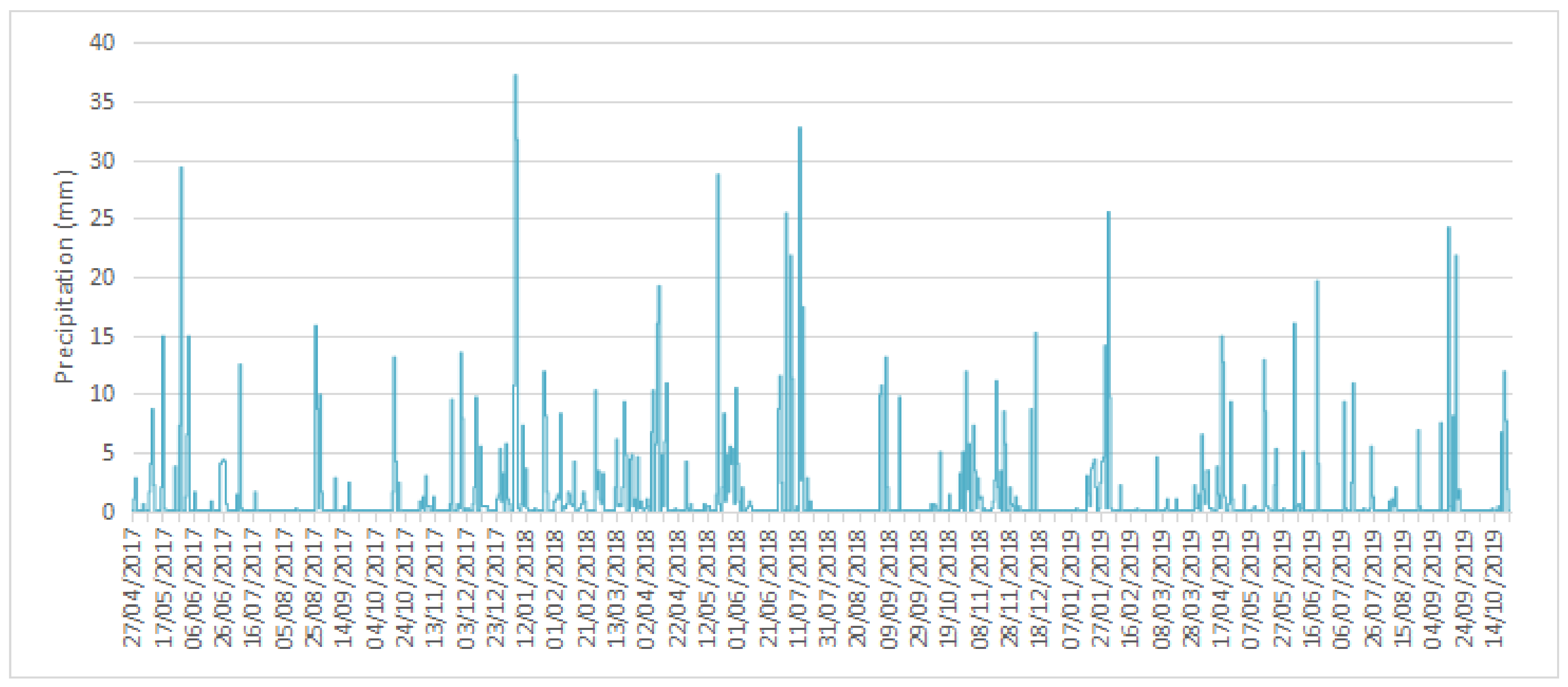
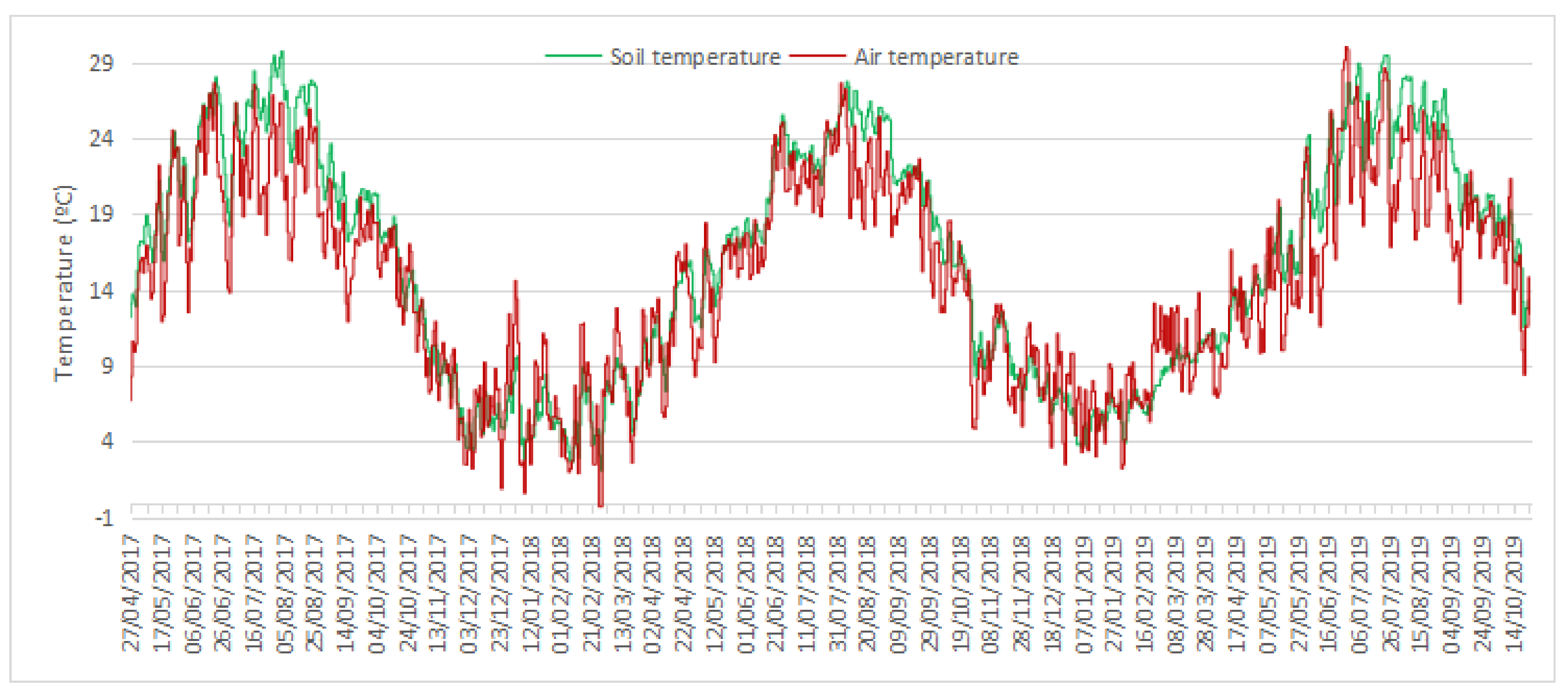
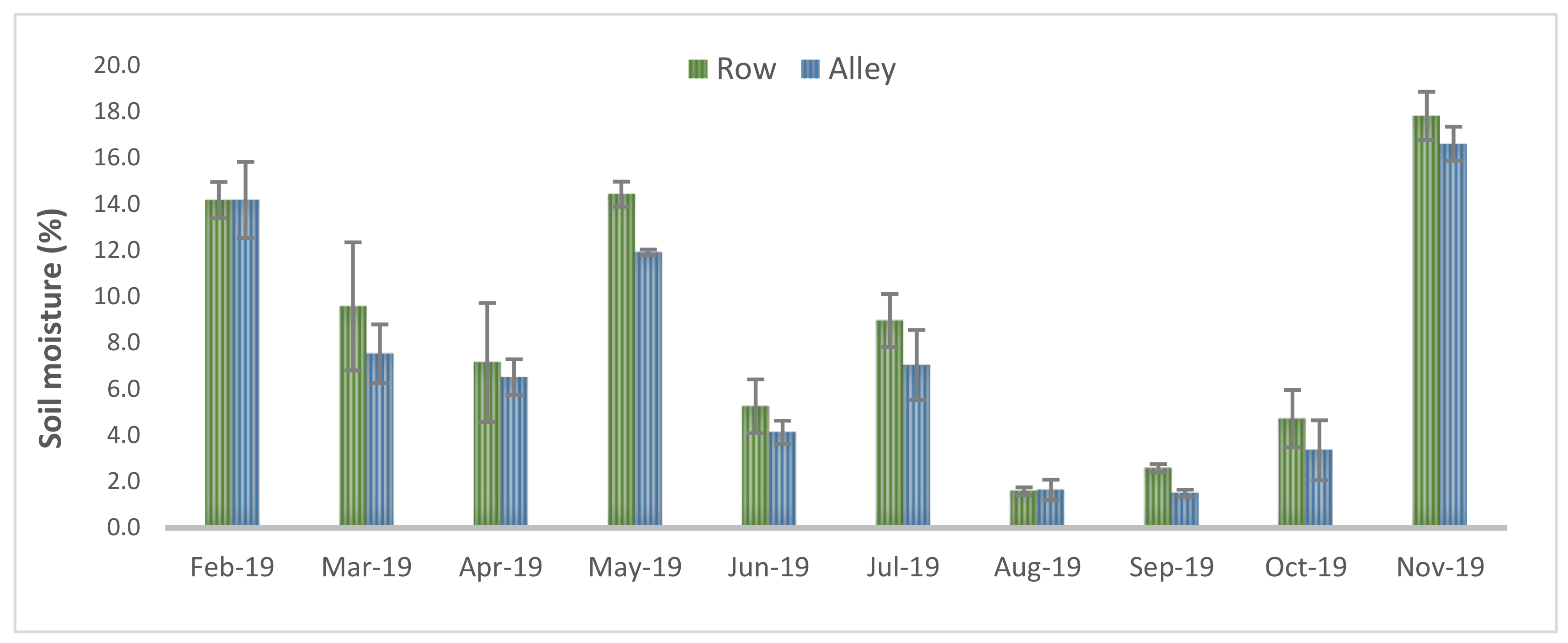
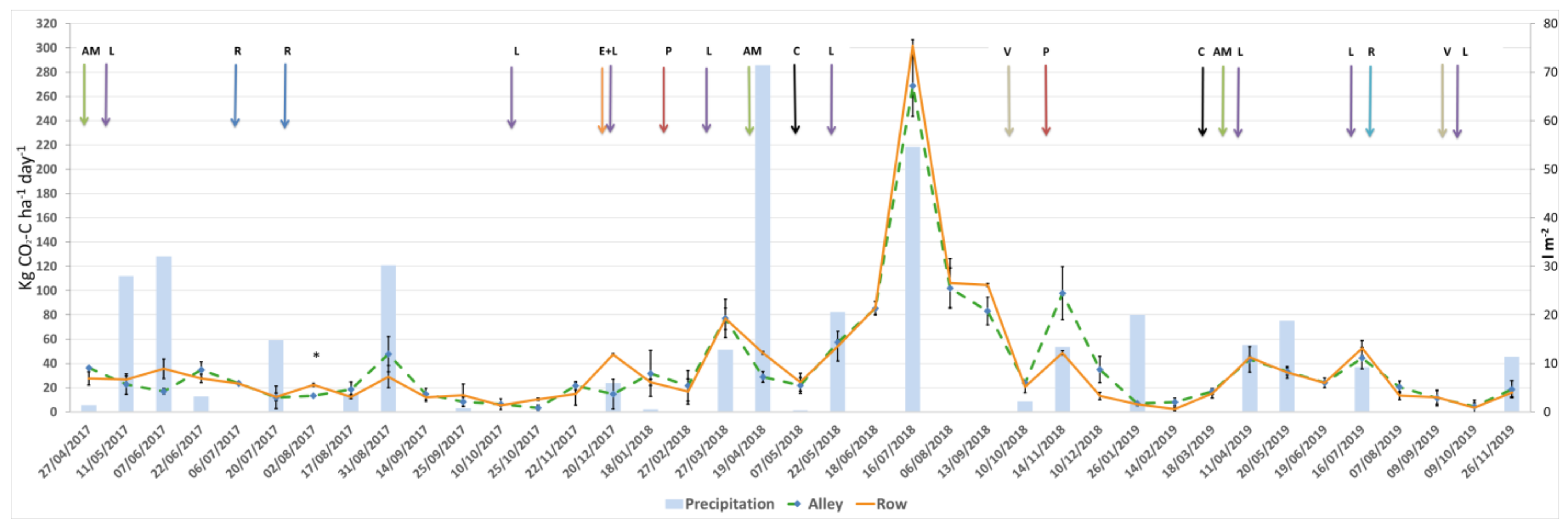
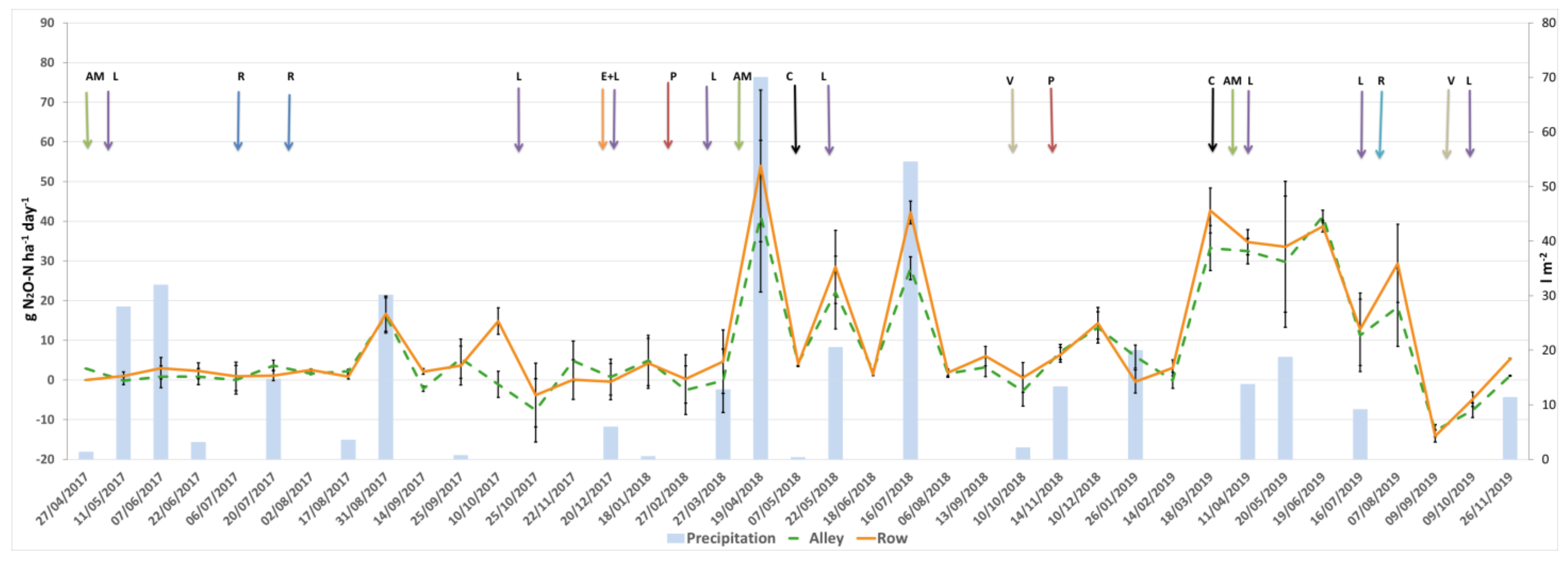

| Horiz. | Depth (cm) | Clay (%) | Silt (%) | Sand (%) | OM (g kg−1) | N (g kg−1) | C/N Ratio | Carbonates (g kg−1) | AL (g kg−1) | pH (Water 1:5) | EC (mmhos cm−1) |
|---|---|---|---|---|---|---|---|---|---|---|---|
| Ap | 55 | 18.3 | 41.4 | 40.4 | 10.3 | 0.72 | 8.31 | 133.0 | 39.0 | 8.4 | 0.12 |
| Bwk1 | 70 | 15.1 | 39.0 | 45.9 | 4.2 | 0.30 | 8.23 | 160.0 | 46.0 | 8.7 | 0.10 |
| Bwk2 | 13 | 11.5 | 33.7 | 54.8 | 2.3 | 0.21 | 6.19 | 137.0 | 33.0 | 8.8 | 0.14 |
| Bwk3 | 62 | 18.5 | 30.3 | 51.3 | 2.9 | 0.36 | 4.69 | 125.0 | 42.0 | 8.7 | 0.24 |
Disclaimer/Publisher’s Note: The statements, opinions and data contained in all publications are solely those of the individual author(s) and contributor(s) and not of MDPI and/or the editor(s). MDPI and/or the editor(s) disclaim responsibility for any injury to people or property resulting from any ideas, methods, instructions or products referred to in the content. |
© 2023 by the authors. Licensee MDPI, Basel, Switzerland. This article is an open access article distributed under the terms and conditions of the Creative Commons Attribution (CC BY) license (https://creativecommons.org/licenses/by/4.0/).
Share and Cite
Rodrigo García, E.; Murillo Peña, R.; Pérez Álvarez, E.P.; Garde Cerdán, T.; Martínez Vidaurre, J.M. The Influence of Climatic Conditions and Agronomic Practices on Greenhouse Gas Emissions in a Conventional Vineyard (DOCa. Rioja, Spain). Agronomy 2023, 13, 2199. https://doi.org/10.3390/agronomy13092199
Rodrigo García E, Murillo Peña R, Pérez Álvarez EP, Garde Cerdán T, Martínez Vidaurre JM. The Influence of Climatic Conditions and Agronomic Practices on Greenhouse Gas Emissions in a Conventional Vineyard (DOCa. Rioja, Spain). Agronomy. 2023; 13(9):2199. https://doi.org/10.3390/agronomy13092199
Chicago/Turabian StyleRodrigo García, Estíbaliz, Rebeca Murillo Peña, Eva Pilar Pérez Álvarez, Teresa Garde Cerdán, and José María Martínez Vidaurre. 2023. "The Influence of Climatic Conditions and Agronomic Practices on Greenhouse Gas Emissions in a Conventional Vineyard (DOCa. Rioja, Spain)" Agronomy 13, no. 9: 2199. https://doi.org/10.3390/agronomy13092199
APA StyleRodrigo García, E., Murillo Peña, R., Pérez Álvarez, E. P., Garde Cerdán, T., & Martínez Vidaurre, J. M. (2023). The Influence of Climatic Conditions and Agronomic Practices on Greenhouse Gas Emissions in a Conventional Vineyard (DOCa. Rioja, Spain). Agronomy, 13(9), 2199. https://doi.org/10.3390/agronomy13092199









